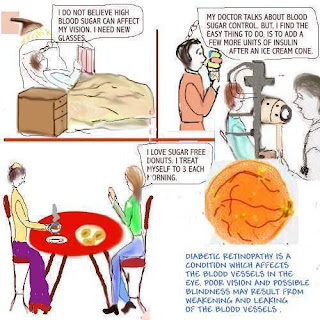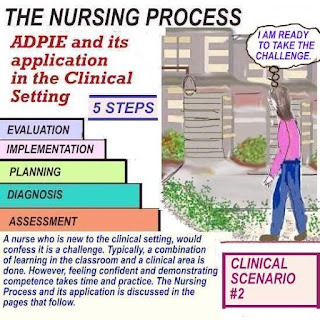DIABETES / PVD / RETINOPATHY AND QUIZ QUESTIONS
Scenario: Tom has Peripheral Vascular Disease and type 2 diabetes.
His high blood glucose affects blood circulation. Tom complains
of "intermittent claudication".
His high blood glucose affects blood circulation. Tom complains
of "intermittent claudication".
PVD means Peripheral Vascular Disease.
Intermittent claudication affects diabetics. Patients experience
pain on walking, but this usually resolves at rest. Circulation to
the legs are affected and gangrene may result. Amputation may
also result from PVD.
the legs are affected and gangrene may result. Amputation may
also result from PVD.

Monitoring blood glucose
Monitoring blood glucose is essential to maintain glucose
within normal limits. Normal blood glucose is 60-120.
Typically, blood glucose is measured before mealtime.
This will make for a more accurate reading. There are
many different blood glucose meters on the market.
within normal limits. Normal blood glucose is 60-120.
Typically, blood glucose is measured before mealtime.
This will make for a more accurate reading. There are
many different blood glucose meters on the market.
Finger sticking for blood glucose monitoring
Finger sticking for glucose monitoring is usually done
off to the side of the finger. Rotation of sites is essential
to allow healing.
It is important for the nurse to follow the manufacturer's
instructions for an accurate meter reading. MD orders are
usually written to follow a sliding scale for each patient.
Monitoring blood glucose is an essential part of managing
the diabetic patient. Hypoglycemic agents or insulin or both
will be ordered by the doctor to meet the patient's needs.
Diabetic Retinopathy is a complication of diabetes.
It affects the blood vessels in the eye. Poor vision and
possible blindness may result from weakening of the
blood vessels.
It affects the blood vessels in the eye. Poor vision and
possible blindness may result from weakening of the
blood vessels.
Learn more: Can a stroke be prevented?





Comments
Post a Comment